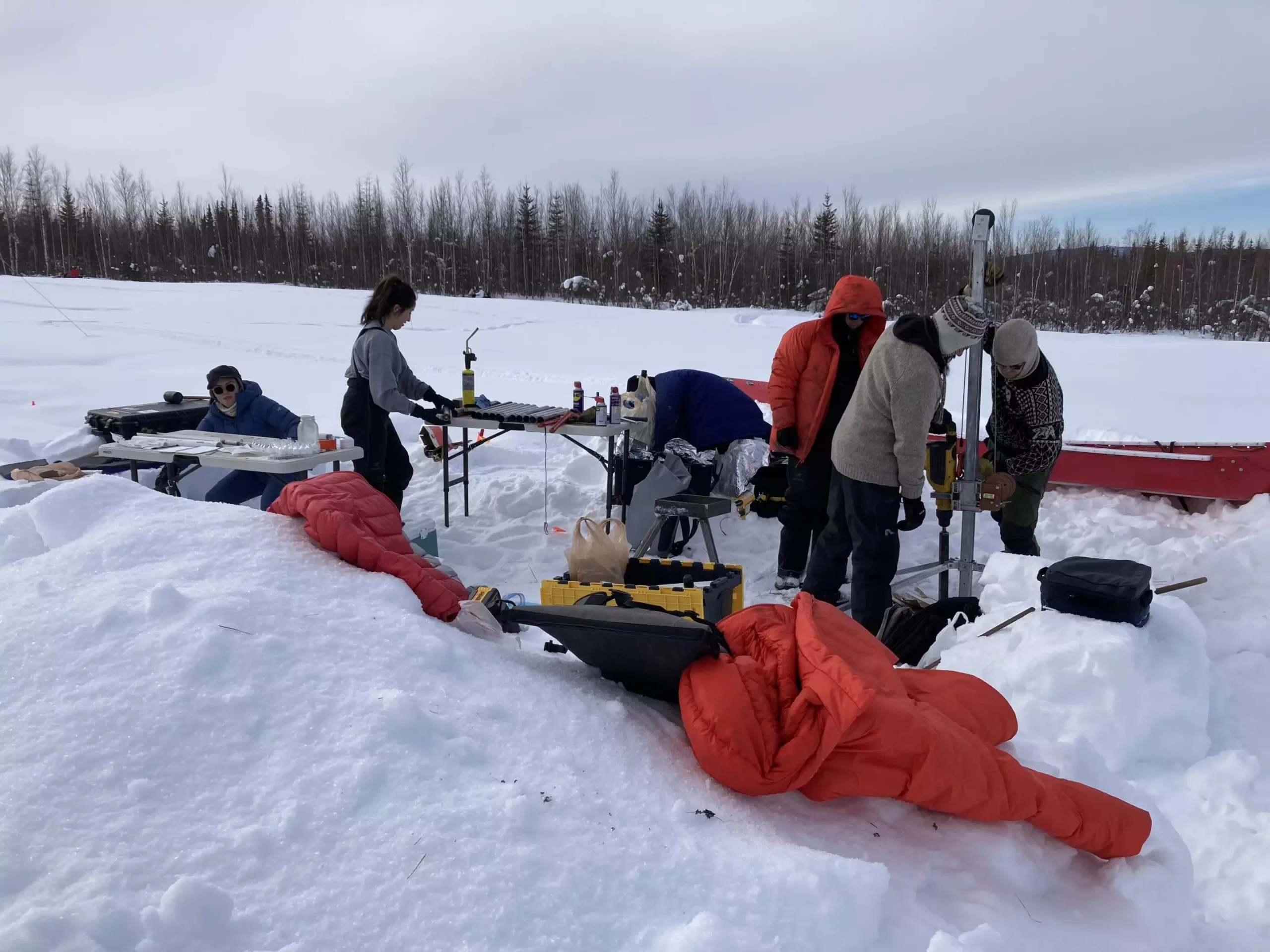In a stunning revelation, scientists have uncovered methane emissions emanating from seemingly unlikely sources within the drylands of interior Alaska. Traditionally viewed as a gas predominantly released by wetlands, methane’s presence in upland ecosystems challenges established notions in climate science. Katey Walter Anthony, an esteemed research professor at the University of Alaska Fairbanks, serendipitously stumbled upon this phenomenon after initially dismissing local reports of methane detecting under the grasslands of Fairbanks. This article delves into the transformative study she spearheaded, its implications for our understanding of carbon emissions, and the pressing need for reassessing the Arctic’s role in global climate change.
When rumors regarding methane bubbling up from lawns circulated in Fairbanks, Walter Anthony was skeptical. As a limnologist, her expertise primarily centered on methane emissions from lakes. Her disinterest waned when a local golf course came under suspicion, leading to firsthand investigations that revealed ignitable “turf bubbles” signaling methane presence. Conversations with locals and her exploration of forested areas unveiled streams of methane emerging from birch and spruce forests, catalyzing a rigorous research initiative.
The comprehensive study, funded by the National Science Foundation, aimed to determine the scope of methane emissions in dryland ecosystems of the Arctic and Interior Alaska. This inquiry culminated in the publication of significant findings in *Nature Communications*, revealing unexpectedly high methane emissions in upland landscapes.
Methane, a greenhouse gas noted for its substantial potency, poses an alarming threat in the context of climate change—being 25 to 34 times more effective than carbon dioxide in trapping heat. The study showcased that methane emission levels from certain dry ecosystems exceeded those often recorded in wetlands, which were previously deemed the definitive sources of greenhouse gases. Surprisingly, the emissions from these more arid regions challenge conventional climate models that viewed such areas as negligible sources of methane, if not carbon sinks.
Winter emissions were substantially elevated, sometimes surpassing those of northern wetlands by a staggering five times, raising questions about the prevailing assumptions in climatology. “This is a groundbreaking revelation,” Walter Anthony remarked, highlighting the need to shift current methodologies and perspectives on greenhouse gas emissions.
Extensive Research and Methodology
Determined to validate her findings, Walter Anthony led a multi-site study across Alaska’s diverse dry upland ecosystems. Within three years, her team examined over 1,200 locations, employing radiocarbon dating, geophysical measurements, and other advanced methodologies to assess methane flux. They focused on identifying key characteristics in the landscape—such as the presence of thermokarst formations and unique features like taliks, areas where soil remains unfrozen year-round.
The study illuminated that methane emissions were rampant across all but three of the surveyed sites. The linkage between these warm zones and the presence of Pleistocene-era carbon-rich deposits—specifically Yedoma soils—suggested a correlation between elevated methane emissions and soil composition. Taliks foster microbial activity even during winter, facilitating carbon decomposition and subsequently methane release.
One staggering revelation from the findings is the significant role of Yedoma soils, which represent a mere 3% of the total permafrost region, yet house over 25% of the carbon stored across northern permafrost. The study projects that under scenarios of ongoing global warming, the formation of taliks across the pan-Arctic Yedoma domain will become widespread by the 22nd century.
“We face a dire situation,” Walter Anthony warned, “as the implications of these findings indicate a larger permafrost-carbon feedback loop that could significantly affect our climate projections.” Enhanced understanding of methane’s potential as a greenhouse gas from upland sites necessitates an urgent reassessment of climate models and the acknowledgment of previously underestimated sources of global warming.
The discoveries made by Walter Anthony and her research team underscore the urgency in reevaluating our approach to understanding methane emissions within terrestrial ecosystems, particularly in Arctic regions. As climate change continues to pose unprecedented risks, acknowledging the complexity and dynamism of carbon emissions in diverse landscapes is imperative. As our scientific knowledge evolves, so must our policies and strategies aimed at mitigating the adverse impacts of climate change—an endeavor that calls for immediate and concerted action on all fronts. In the fight against climate change, awareness of emerging threats such as upland methane emissions is essential to protect our planet’s future.

